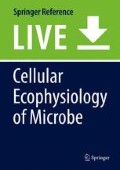Abstract
One animal beautifully adapted to the viscous asphalt of the La Brea Tar Pits is the oil fly Helaeomyia petrolei (Syn. Psilopa). As a normal part of its carnivorous existence, the oil fly larval guts are filled with tar, with no adverse effects. Surface sterilized larvae contained ca. 2 × 105 heterotrophic bacteria per larva. These bacteria have been identified as a mixture of enteric bacteria, most commonly Providencia rettgeri and Acinetobacter spp. These bacteria were clearly growing because their numbers in the larval guts were 100–1,000 times greater than in free oil/asphalt. There is no evidence yet that these bacteria can degrade the complex aromatic hydrocarbons of the tar/asphalt. However, the bacteria isolated are highly solvent tolerant, and they remain a potential source of hydrocarbon-/solvent-tolerant enzymes. Likely of greatest evolutionary interest, these bacteria were naturally resistant to 9 of 23 common antibiotics tested. This finding suggests that the oil fly bacteria have an active efflux pump for aromatic hydrocarbons, due to the constant selective pressure of La Brea’s solvent-rich environment. We suggest that the oil fly bacteria and their genes for solvent tolerance may provide a microbial reservoir for antibiotic resistance genes.
References
Baumann P, Doudoroff M, Stanier RY (1968) A study of the Moraxella group. II. Oxidative-negative species (genus Acinetobacter). J Bacteriol 95:1520–1541
Blasco R, Wittich R-M, Mallavarapu M, Timmis KN, Pieper DH (1995) From xenobiotic to antibiotic, formation of protoanemonin from 4-chlorocatechol by enzymes of the 3-oxoadipate pathway. J Biol Chem 270:29229–29235
Chopard L (1963) La mouche du petrole et les questions qu’elle pose. La Nat (Paris) 3338:255–256
Foote BA (1995) Biology of shore flies. Annu Rev Entomol 40:417–442
Hogue CL (1993) Insects of the Los Angeles Basin, 2nd edn. Natural History Museum of Los Angeles County, Los Angeles
Hujer KM, Hujer AM, Hulten EA, Bajaksouzian S, Adams JM, Donskey CJ, Ecker DJ, Massire C, Eshoo MW, Sampath R, Thomson JM, Rather PN, Craft DW, Fishbain JT, Ewell AJ, Jacobs MR, Paterson DL, Bonomo RA (2006) Analysis of antibiotic resistance genes in multi-drug resistant Acinetobacter sp. Isolates from military and civilian patients treated at the Walter Reed Army Medical Center. Antimicrob Agents Chemother 50:4114–4123
Kadavy DR (2001) Characterization of microorganisms associated with Helaeomyia petrolei (oil fly) larvae. University of Nebraska, Ph.D. thesis, Lincoln
Kadavy DR, Plantz B, Shaw CA, Myatt J, Kokjohn TA, Nickerson KW (1999) Microbiology of the oil fly, Helaeomyia petrolei. Appl Environ Microbiol 65:1477–1482
Kadavy DR, Hornby JM, Haverkost T, Nickerson KW (2000) Natural antibiotic resistance of bacteria isolated from larvae of the oil fly, Helaeomyia petrolei. Appl Environ Microbiol 66:4615–4619
Kim J-S, Crowley DE (2007) Microbial diversity in natural asphalts of the Rancho La Brea Tar Pits. Appl Environ Microbiol 73:4579–4591
McInerney MJ, Nagle DP, Knapp RM (2005) Microbially enhanced oil recovery: past, present, and future. In: Ollivier B, Magot M (eds) Petroleum microbiology. ASM Press, Washington, pp 215–237
Richet H, Fournier PE (2006) Nosocomial infections caused by Acinetobacter baumannii: a major threat worldwide. Infect Control Hosp Epidemiol 27:645–646
Stanier RY, Palleroni NJ, Doudoroff M (1966) The aerobic pseudomonads: a taxonomic study. J Gen Microbiol 43:159–271
Thorpe WH (1930) The biology of the petroleum fly (Psilopa petrolei). Trans Entomol Soc Lond 78:331–344
Thorpe WH (1931) The biology of the petroleum fly. Science 73:101–103
Valentine SC, Contreras D, Tan S, Real LJ, Chu S, Xu HH (2008) Phenotypic and molecular characterization of Acinetobacter baumannii clinical isolates from nosocomial outbreaks in Los Angeles county California. J Clin Microbiol 46:2499–2507
Author information
Authors and Affiliations
Corresponding author
Editor information
Editors and Affiliations
Rights and permissions
Copyright information
© 2017 Springer International Publishing AG
About this entry
Cite this entry
Nickerson, K.W., Plantz, B. (2017). Microbiology of Oil Fly Larvae. In: Krell, T. (eds) Cellular Ecophysiology of Microbe. Handbook of Hydrocarbon and Lipid Microbiology . Springer, Cham. https://doi.org/10.1007/978-3-319-20796-4_37-1
Download citation
DOI: https://doi.org/10.1007/978-3-319-20796-4_37-1
Received:
Accepted:
Published:
Publisher Name: Springer, Cham
Print ISBN: 978-3-319-20796-4
Online ISBN: 978-3-319-20796-4
eBook Packages: Springer Reference Biomedicine and Life SciencesReference Module Biomedical and Life Sciences

